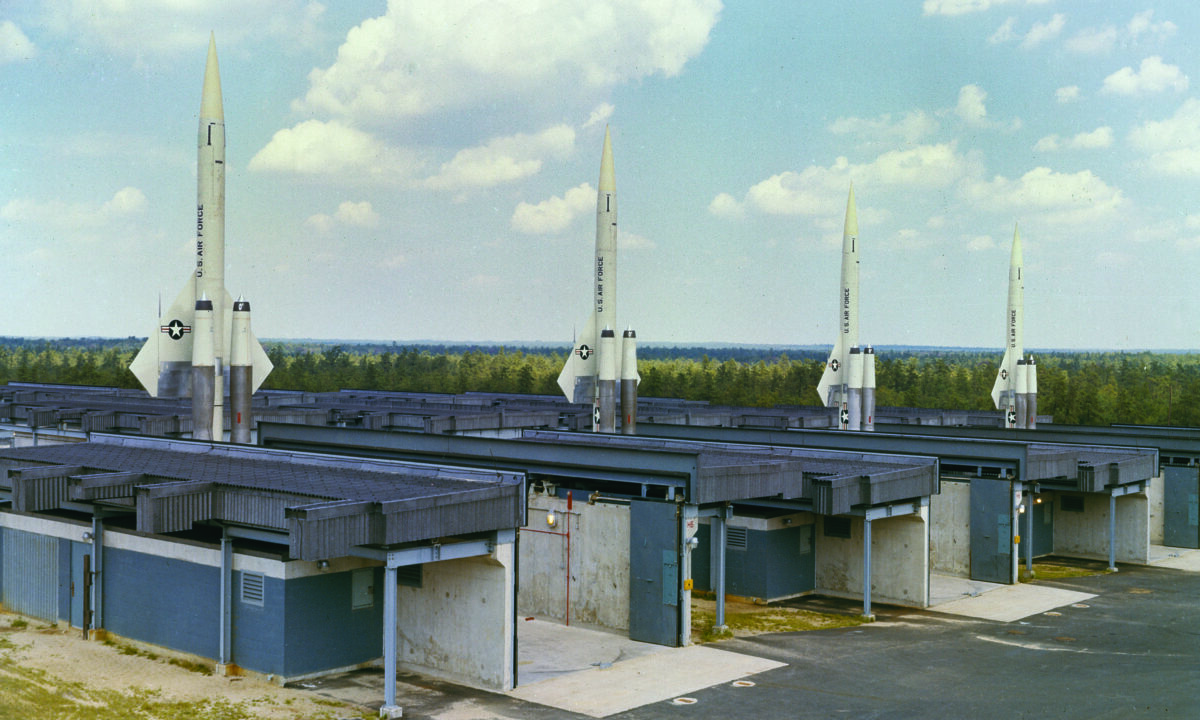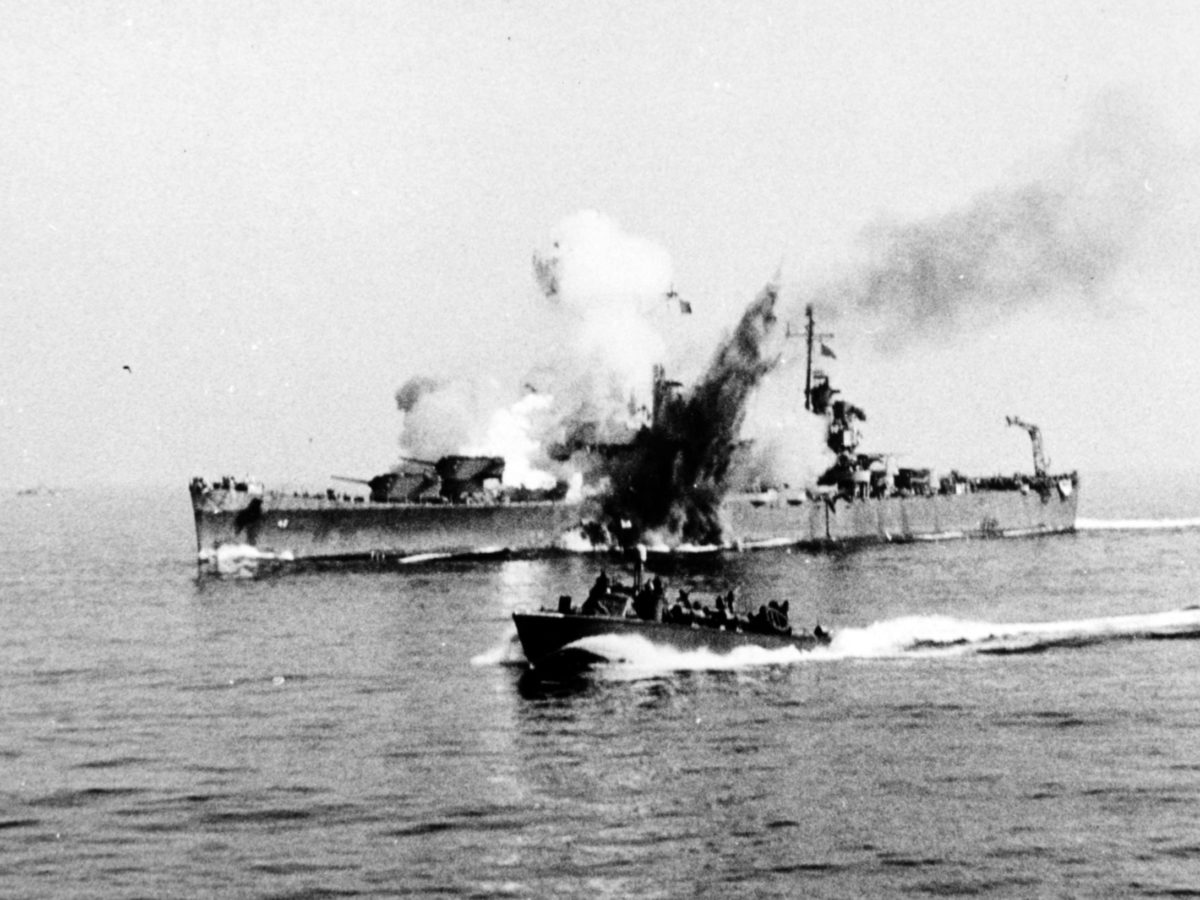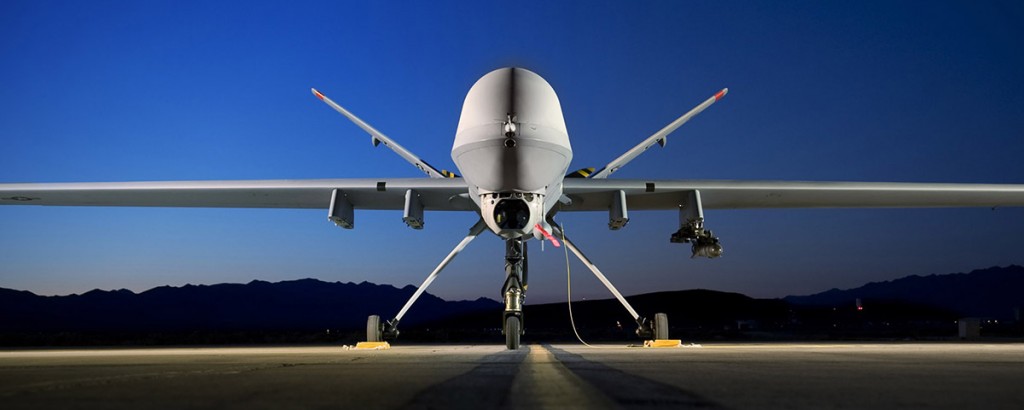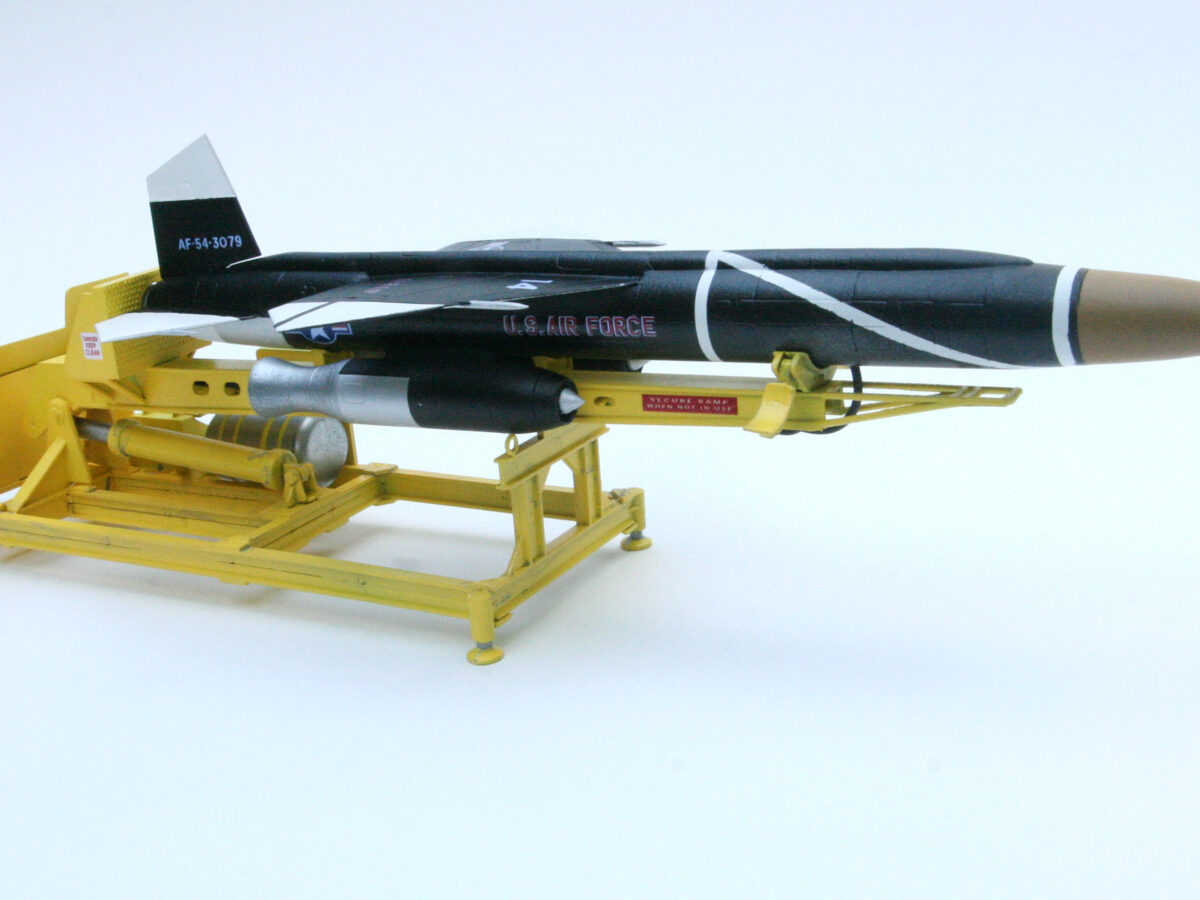When is a missile not a missile? When it is a “ground-to-air pilotless aircraft.” That, for a while, was the official description of the Bomarc, the United States’ first surface-to-air missile (SAM) and the only one ever deployed by the U.S. Air Force.
The rationale behind that awkward example of military doublespeak was based more upon interservice rivalry and government bureaucracy than on any logical explanation. According to the allocation of duties stipulated by the newly unified Department of Defense in 1949, ground-to-air defensive systems, including SAMs and anti-aircraft artillery batteries, fell under the jurisdiction of the U.S. Army. In other words, if the Bomarc was designated as an anti-aircraft missile, then it should have been under the Army’s control. At that time, however, the Army was already developing its own SAM system, the Nike. Parallel development of the Bomarc and Nike would have constituted a major duplication of effort and expense that would have been difficult to justify, even during the paranoid Cold War days of the early 1950s. Consequently, the only way for the Air Force to keep the Bomarc program alive and under its jurisdiction was to designate it as a ground-to-air pilotless airplane. Thus, for several years during the early 1950s, the Bomarc guided missile was listed under the official USAF designation XF-99, as if it was a manned fighter aircraft.
Recommended for you
The Bomarc’s development began in 1946, when the Army Air Forces’ Air Materiel Command asked Boeing to design a ground-launched, long-range guided missile for the interception of enemy bombers. The enemy in question was obviously the Soviet Union, which was already known to be building copies of Boeing’s nuclear-capable B-29 Superfortress. Three B-29s had been interned in Russia during World War II, and the Soviets were in the process of using them to reverse-engineer the Tupolev Tu-4.
The missile was developed by Boeing in cooperation with the University of Michigan’s Michigan Aeronautical Research Center under project MX-1599. It eventually acquired its name—a mash-up of “BO” and “MARC”—from those two organizations.
North Korea’s 1950 invasion of South Korea heated up the Cold War and added urgency to the development of the Bomarc, which was first flown in September 1952. Three years later the Air Force finally dropped the pretense of the Bomarc being a “fighter” and changed its designation to IM-99, signifying “interceptor missile.” That was again altered in 1963 to CIM-10.
In both its size and configuration, the Bomarc resembled a jet fighter more than it did a missile. It had a high-set delta wing and conventional tail surfaces. The tips of the wings, fin and horizontal stabilizers pivoted to act as control surfaces. At 46 feet 9 inches long, and with a wingspan of 18 feet 2 inches and a weight of 16,000 pounds, the Bomarc was as large as a typical manned jet fighter of the 1950s.
The Bomarc was a complex weapon system that broke a lot of new ground and, not surprisingly, took a long time to perfect. Consequently, it was not until 1957 that Boeing finally received a contract to manufacture the Bomarc for the USAF. Total production amounted to 270 of the initial CIM-10A Bomarcs and 301 of the improved CIM-10Bs. The B differed from the A in replacing the original vacuum-tube electronics with improved solid-state components, and swapping the original liquid-fuel booster rocket for a solid-fuel booster. The latter enabled the missile to be prepared for firing more rapidly. It also freed up space in the fuselage for additional fuel, which increased the range from 270 to 440 miles.
The Bomarc had an unusual propulsion system that combined a booster rocket inside the fuselage with two ramjet engines mounted externally beneath the fuselage. Once the booster rocket got the Bomarc airborne, the ramjets took over, propelling the missile to a maximum speed of Mach 3 at 100,000 feet.
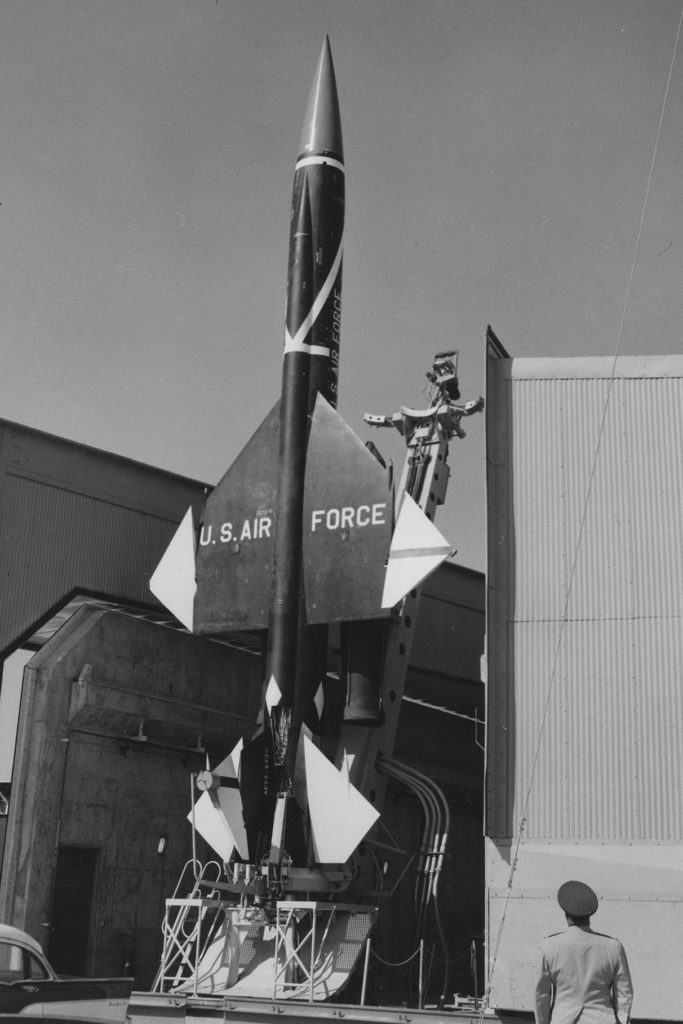
While the Bomarc could be armed with conventional explosives, it was designed to carry a 7- to 10-kiloton nuclear warhead. That nuclear warhead precipitated the weapon’s most controversial moment. On June 7, 1960, less than a year after the first IM-99A squadron became operational, a Bomarc missile caught fire in its hangar at Fort Dix, N.J. The fire was caused by an explosion in the fuselage helium tank, and it burned for 15 hours before finally being extinguished. Although the nuclear warhead did not explode, the surrounding area up to a half-mile from the site was exposed to plutonium. Over the ensuing decades, and as late as 2007, tens of thousands of cubic yards of contaminated soil and debris were removed for disposal.
Despite its protracted development, the missile had a relatively short operational career—13 years, from 1959 to 1972—and Bomarcs were only deployed to nine USAF and two Royal Canadian Air Force squadrons before being rendered obsolete by the advent of intercontinental ballistic missiles. Designed for use against manned bombers, the Bomarc, unlike the Army’s Nike, was an inadequate defense against ICBMs. For some years after they were retired, the Air Force got some use out of its surplus Bomarcs by expending them as target drones.
The two RCAF Bomarc squadrons became a source of controversy all their own. The decision generated a heated national debate over whether Canada should possess nuclear arms. Apart from that, Prime Minister John Deifenbaker canceled the Canadian-designed and-built Avro Arrow interceptor in order to procure the Bomarcs. To this day, the abrupt scrapping of the promising Arrow remains a sore subject among many Canadians.
Want to build your own Bomarc missile? Click here!
This feature originally appeared in the September 2017 issue of Aviation History Magazine. Subscribe here!

